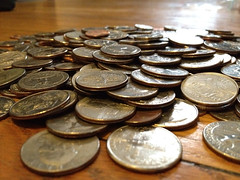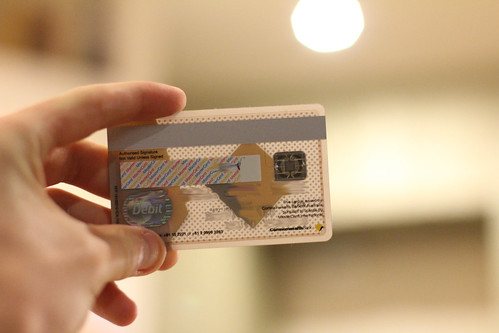When deciding on a new range, here’s what you’ll need to know about features, style, price, and performance.
Today’s ranges cook more efficiently than their avocado ancestors thanks to fresh features and newfangled technologies. We separate the wheat from the chaff so you can pick the best range for your home.
First Things First: Gas or Electric?
If you don’t have a gas supply to your house, the answer is easy. But if you can go with either gas or electric, budget and cooking preferences play a significant role in deciding. Also, some people prefer electric ranges because of safety issues — there’s no chance of a gas leak. Here’s food for thought:
- Popularity: Electric smooth-top ranges are the best sellers because of price and performance. They account for more than 60% of all ranges sold.
- Budget: Electric ranges are typically less expensive than their gas counterparts. However, gas ranges are usually cheaper to operate, depending on whether your natural gas rates are lower than your electricity costs.
- Cooking preferences: Listen to your inner chef. Many cooks prefer gas ranges because the burner flame works as a visual temperature gauge and can heat things up quickly. Most bakers prefer electric ovens because of the consistent and even heat they generate.
Here’s a surprising fact: There are no federal energy regulations for consumer ranges, so you won’t find a model that’s Energy Star certified.
Types of Ranges and Costs
There are three standard freestanding range types: electric, gas, and dual-fuel (a gas stovetop with an electric-powered oven). Each type includes:
- A stovetop (with a minimum of four burners — many premium models have five)
- An oven (usually two racks and one oven — many premium ranges will have a larger oven with three racks or two ovens)
If you want your range to look like it’s built into your cabinetry, there are two additional options. Both are somewhat rare and may require special ordering through an appliance dealer:
- Slide-in ranges. The range fits between two cabinets and the edges of the cooktop rest on top of the counters, eliminating gaps. They’re available in gas, electric, and dual-fuel range styles.
- Drop-in ranges. They‘re fitted into a pre-built cabinet opening with a cabinet panel across the bottom. The panel eliminates the bottom storage drawer typical of most ranges. They’re available in electric power only.
1. Electric ranges
Electric ranges feature three options for cooktop heating elements.
Coil-top models have exposed heating elements. Cookware goes directly on the elements. They’re the least expensive ranges you can buy ($389 to $650) and typically are available in only two colors: black or white. Features include:
- Porcelain-enamel cooktop finish
- Indicator lights that let you know when the burner’s coil heating element is on
- Dials and knobs for oven and burner control
Coil-top ranges at the top end of the price range usually include:
- Digital displays for heating temperatures and cooking times
- Single storage drawers for cookware
Drawbacks:
- Coil heating elements are slow to heat up and cool.
- Heating elements must be removed for thorough cleaning.
- Indicator lights only go on when the cooktop’s coils are switched on, but not when the coils are off but still hot (and cooling down).
- Coil cooktops tend to distribute heat unevenly.
Smooth-top models have solid disk or radiant heating elements beneath a one-piece ceramic glass cooktop that makes cleanup easy. Smooth tops are the best-selling ranges because of their performance, price, and good looks.
Mid-range models start at $550. Standard features typically include:
- Electronic oven controls with preset cooking options and digital displays
- Indicator lights that let you know when the heating elements are on and when the surface area is hot and cooling down
Premium smooth-top ranges include fast-cooking convection ovens that use fans to circulate heat so foods bake or roast more quickly and evenly; they can slash cooking times by up to 30%. Premium models start at around $900 and typically include:
- Hidden heating elements (rather than an exposed wire element sitting on the bottom of the oven’s interior) for easier oven cleaning
- Warming centers that keep prepared foods warm
- A fifth stovetop heating element
Smooth-top models with two ovens start at around $1,300.
Drawbacks:
- Glass ceramic surfaces are a cinch to clean but prone to scratching.
- You can’t use cast-iron, stoneware, or glass cookware on the cooktop because they can scratch. Also, glass and stoneware are poor heat conductors, which increases cooking time. The intense heat that cast iron creates can actually shut down the range. Stainless steel and copper are best.
- Overheated metal cookware may bond with the cooktop’s glass ceramic surface.
Induction-top models are known for speedy stovetop cooking. Their burners don’t generate heat like other stovetops. Instead, they use magnetic technologies to turn compatible cookware into a heat source. If you can stick a magnet to your cookware, you can use it. As a result, the induction top’s glass ceramic surface remains cool to the touch.
Induction stovetops can boil water about 50% faster than other stoves. They’re also energy-efficient; 90% of the energy they generate is used to cook food (a standard electric stovetop uses about 65% and a gas stovetop uses 50%).
They’re typically equipped with convection ovens which speed cooking time by using fans to circulate and boost heat transfer. Prices range from $1,200 to $3,200. Induction ranges include:
- Control lockouts that prevent the range from being accidentally turned on
- Touch screens instead of knobs and dials
- Hidden baking elements for easier cleaning
Drawbacks:
- Not all your pots and pans will be compatible with the induction stovetop. Aluminum, copper, glass, and some types of stainless cookware won’t work.
2. Gas ranges
Besides the visual control of the flame and quick, uniform heating, benefits include:
- Compatibility with all cooktop and oven cookware
- Surface burners and ovens that still work when the power goes out (but not a fan-driven convection feature)
- Lower operating costs than electric ranges — depending on your local utility rates
Heat output for gas range burners is described in Btu (British thermal units). Burners range from 5,000 to 20,000 Btu. Ranges with high-heat burners usually cost more.
General retail price range: $399 to $5,300.
Standard models are the least expensive gas ranges you can buy and typically are available in two basic colors: black or white. Prices start at $399 and usually include the following features:
- Porcelain-enamel cooktops
- Burners that don’t burn as hot as more expensive ranges (average 9,500 Btu)
- Cast-iron grates over the burners
- Dials and knobs for oven and burner control
- Oven windows that are typically much smaller than those on more expensive models
Mid-range models start around $650. Features typically include:
- High-performance burners (up to 12,500 Btu)
- Digital settings for cooking times and temperatures
- Storage drawers for pots and pans
- Oven control lockouts that stop unintended changes to oven settings
- Easy-to-clean steel grates over the burners
- White, black, and stainless steel color options
Premium models start at around $1,000; double-oven-type gas ranges start at around $1,600. Features typically include:
- High-performance burners (up to 17,000 Btu)
- A removable stovetop griddle
- Electronic control panels for programmed cooking times
- Hidden baking elements for easier cleaning
Pro-style models start at around $1,700. They’re wider than standard ranges and have large oven capacities of 5.8 cubic feet and more. Additional features typically include:
- A bonus fifth burner, with one being a super-hot burner of up to 20,000 Btu
- Heavy-duty rollout cooking racks
- Multiple color and metal options
Drawbacks:
- Gas ranges tend to be more expensive then their electric range counterparts.
- You need a natural gas line hooked up to your kitchen.
3. Dual-fuel ranges
These ranges combine the best of both worlds: a gas stovetop that chefs love with an electric-powered oven that provides even heat for baking. They come with a premium price tag of $2,000 to $7,500.
Features include:
- Gas stovetops with five burners
- One or two electric convection ovens
- Glass touch screens for burner and oven controls
- Wi-Fi-enabled programming so you can control oven features with your personal device
Size Does Matter
Freestanding ranges typically fall into two conventional widths: Standard ranges are approximately 30 inches wide; dual-fuel and pro-style gas ranges are 36 to 48 inches wide.
You’ll need to make sure your range’s oven cavity size is large enough to accommodate your cooking needs:
- 2 to 3 cubic feet will accommodate households with one or two people.
- 3 to 4 cubic feet will accommodate households with three or four people.
- 4 cubic feet and up will accommodate households of four or more.
Want to Color Your World?
Unlike refrigerators and clothes washers that are available in fashion-forward shades like ruby red or apple green, mid-range and premium ranges are typically available in shades of black, white, and stainless steel. You’ll have to look at pro-style ranges to get custom colors such as red, blue, and green.
Features and Functions You Should Have
We think the features that pack the most value for homeowners are the ones that boost convenience. Here’s a list of best bets:
Lots of rack positions so you can create room in your oven for additional or tall items when needed. Most ranges have five (yea!) but some lower-price ranges will not (boo!).
Hot surface lights on electric stovetops will let you know if the burner area is too hot to touch. You won’t find this feature on most coil-top electric ranges.
Double ovens will allow you to cook multiple items at different temperatures. Keep in mind you’ll sacrifice the convenient storage drawer for the extra oven.
A high heat burner is desirable for quickly heating up large quantities and for searing foods.
Warming drawers keep cooked foods warm prior to serving.
A self-cleaning cycle makes cleaning your oven less of a chore.
Sabbath mode settings allow observant Jews to preprogram oven settings so cooked foods remain warm during the Sabbath when cooking is forbidden.
Features You Shouldn’t Pay More For
You shouldn’t buy a range just because it has some of the following features. (Some features are standard on ranges with electronic screens.)
The delayed-start feature allows you to program your oven when to turn on, and Wi-Fi-enabled features allow you to control your oven when you’re not home. The National Fire Protection Association says you should never operate your oven when you’re not home to check on it regularly.
Low-powered burners with extra-low settings aren’t necessary because burner output can be easily adjusted.



